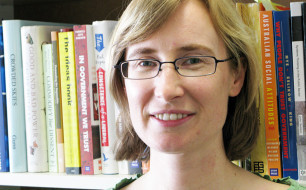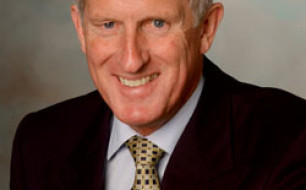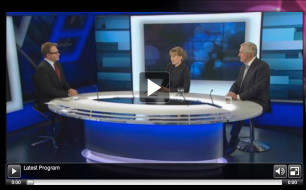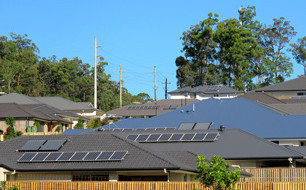Centre for Policy Development's Blog, page 70
May 27, 2013
‘False economies’ part 2: ‘Doing less with less’ | LANDMARK REPORT
Why some cuts hurt more than others
In Doing less with less, CPD public service Research Director Christopher Stone contends that sometimes cutting can cost more than it saves. Shifting responsibility to the private sector is not a cost-effective strategy when the public sector is better placed to provide essential services. While efficiency is defined in terms of producing more with the same or lesser expenditure, and some politicians talk about doing ‘more with less’, arbitrary spending cuts can in reality simply mean doing less with less.
Recent budgetary imperatives to cut service provision underline the importance of careful and evidence-based decisions on where to cut and how. This second instalment of CPD’s three-part False economies report provides examples of where peremptory cuts would have led to increased costs as well as reduced performance:
In 2o11 Queensland spent $120 million maintaining public works skill capacity much higher than that of Victoria. Queensland may have saved nearly three times what it spent, $350 million, by using that capacity to keep public works costs low.
Doing less with less also highlights examples that cast doubt on the assumption that the private sector always does the best and most efficient job of delivering essential services, for example:
Detailed analysis by the Productivity Commission comparing public and private hospitals has shown that the efficiency of each is very similar, with both having areas of strength compared to the other.
The cases provide evidence that reducing government can be wasteful and inefficient. They are a warning that when cuts, privatisation, or outsourcing are considered, thorough and sophisticated analysis of the costs and benefits of such actions is necessary.
Download False Economies Part 2 – Doing less with less
Download Doing less with less media release
Help us counter evidence-free attempts to outsource, downsize and privatise our public services – Become an Ideas Sustainer
May 21, 2013
The Daily, 2SER | 10 May 2013
 Laura Eadie talks dollars and sense for sustainable living
Laura Eadie talks dollars and sense for sustainable livingFriday Daily presenter Kylar spoke with Laura Eadie, CPD’s sustainable economy research director, about recently released report, Going Solar: Renewing Australia’s Electricity Options.
We all know that solar power will soon be more affordable than conventional electricity. We also know how good it is for the environment. So why has it taken so long for rooftop solar power to become viable for Australian households?
Play the interview on 2Ser’s website
May 20, 2013
NSW Fabian Society | What is the future for social democracy?
Australian social democracy is facing the electoral wilderness, its traditional institutional bases are in decline and there is increasing political fragmentation on the left of politics. Is there a way forward for Australian social democracy? Can social democracy overcome this current crisis and be renewed?
Panellists will discuss the meaning of social democracy and whether it continues to have a purpose.
Jennifer McAllister – ALP National President
Professor Frank Stilwell – Emeritus Professor of Political Economy, University of Sydney
Miriam Lyons – Executive Director, Centre for Policy Development
When: 6 for a 6:30pm start, Monday 27th May
Where: Level 7, Community and Public Sector Union. 191-199 Thomas Street, Haymarket
 Cost: Free, but please RSVP at the Fabian Society website
Cost: Free, but please RSVP at the Fabian Society website
May 19, 2013
Pushing our luck: authors and chapters announced!
 Forthcoming CPD book – the project takes shape…
Forthcoming CPD book – the project takes shape…CPD’s forthcoming book Pushing our luck will contain 10 chapters by experts and critical thinkers in their respective fields.
Authors were encouraged to imagine what policies their ideal government would implement for the future of all Australians.
Introduction: Miriam Lyons – Making Australia more welcoming to big ideas and long term thinking?
Chris Bonnor and Jane Caro – Educating equally – and the consequences of school inequality
Ian McAuley: The end of the resource boom – why economic diversity matters
Geoff Gallop: How to make Australia more democratic
John Wiseman: How Australia would look if we took climate seriously
Lindy Edwards: The future of Australian diversity
Lisa Heap: The rise of insecure jobs
Roy Green: The risks of falling productivity
Jennifer Doggett: Getting better – improving the health care system
Eva Cox: Using welfare to make Australian society more inclusive
Shaun Wilson, Adam Stebbing, Adrian March and Miriam Lyons: Why Australians need to pay more tax
[image error] Short-term thinking cannot address Australia’s long-term dilemmas – help CPD publish Pushing our luck for a better-informed debate!
Pushing our luck: authors and chapters
 Forthcoming CPD book – the project takes shape
Forthcoming CPD book – the project takes shapeCPD’s forthcoming book Pushing our luck will contain 10 chapters by experts and critical thinkers in their respective fields.
Authors were encouraged to imagine what policies their ideal government would implement for the future of all Australians.
Introduction: Miriam Lyons – How can we make Australia more welcoming to big ideas and long term thinking?
Chris Bonnor and Jane Caro – Educating equally – and the consequences of school inequality
Ian McAuley – The end of the resource boom – why economic diversity matters
Geoff Gallop – How to make Australia more democratic
John Wiseman – How would Australia look if we took climate seriously?
Lindy Edwards – The future of Australian diversity
Lisa Heap – The rise of insecure jobs
Roy Green – The risks of falling productivity
Jennifer Doggett – Getting better: improving the health care system
Eva Cox – Using welfare to make Australian society more inclusive
Shaun Wilson and Miriam Lyons – Why Australians need to pay more tax.
[image error] Short-term thinking cannot address Australia’s long-term dilemmas – help CPD publish Pushing our luck for a better-informed debate!
May 14, 2013
Radio National Drive budget special | 14 May 2013
 Discussing the budget on Radio National Drive
Discussing the budget on Radio National DriveJonathan Green hosts CPD’s Miriam Lyons and Dr John Hewson, former Liberal leader, with input from Paul Bloxham, Alison Carabine, Dr Cassandra Goldie, John Daley, John Connor and Innes Willox.
“Treasurer Wayne Swan has handed down his sixth budget, spelling out a decade’s worth of cuts to pay for the promised Gonski education reforms and a national disability care scheme. Among its cuts, the government has axed the baby bonus. But Mr Swan says the budget will come back to surplus in 2016-17″
Miriam reasons the deficit does not warrant panic, however with high well-being indicators Australian’s need to be prepared for increased taxes to keep up high quality public services and social outcomes.
ABC The Drum budget special | 14 May 2013
 Miriam Lyons, panellist…
Miriam Lyons, panellist…CPD’s Executive Director Miriam joined former Liberal leader Dr John Hewson and economic commentators to discuss what has been touted as Wayne Swan’s final budget.
The Treasurer Wayne Swan has delivered his sixth budget. It’s short on sweeteners but long on vision for signature policies like disability care and education funding. So how will the Australian people react?
Miriam commented on the treasurer’s reluctance to increase taxation saying that it is, “time to face up to the need to pay more tax, to deliver on Labor’s values”.
May 13, 2013
ABC Media Watch | 13 May 2013
| CPD & Crikey were criticised by Media Watch for failing to include recent announcements on the Coalition’s policy in our NBN PromiseWatch piece.
PromiseWatch 2013 is a series of ’snapshots’ of the major parties’ policies, which CPD and Crikey are collaborating on in the lead up to the federal election. Our lovely volunteer researchers started drafting the pieces based on official party platforms and policy positions earlier this year, and we recently combined with Crikey to quickly update and publish them to provide readers with a simple, plain-English guide to what’s on offer from Labor, the Coalition and the Greens.
The article in question, which focused on Labor, Coalition and Greens policies on the delivery of a national broadband network (NBN), suffered from a bit of group-project-itis, which resulted in its being published with outdated information, including references to the Coalition’s policy document from 2010. After the office of Shadow Minister for Communications Malcolm Turnbull pointed out the oversight, the post was corrected, and is available here.
We’re sorry we didn’t get it right the first time! Each PromiseWatch piece is intended to be a ‘living document’ – if time permits we’ll keep updating them all right up to the election. You can find the rest of the PromiseWatch pieces at http://www.crikey.com.au/2013/04/29/p...
PromiseWatch 2013: Mental health services
Published in partnership with Crikey, the PromiseWatch 2013 series captures snapshots of the major parties’ platforms in key policy areas.
Before the 2010 election, the Gillard government authorised the Mental Health Commission to draft an overview of the current state of mental health care in Australia. The commission delivered its comprehensive report to Mental Health Minister Mark Butler in November 2012. As part of its investigation, the commission found the infrastructure of Australia’s mental health research was weak, especially in regards to “research and evaluation of services, treatments and programs”. Furthermore, there existed no effective implementation of evidence-based mental health services, possibly as a result of a lack of research funding.
To rectify this situation, the commission recommended that the government:
Implement regular independent surveys of individuals’ experience of mental health services so as to measure the success of government programs;
Increase access to mental health services from 6-8% of the population to 12%;
Reduce use of involuntary treatment and restraint of mental health patients;
Work with state governments to reduce the early death rate and physical health problems of those affected by mental illness;
Specifically address the mental health problems of Aboriginal and Torres Strait Islander people;
Treat the issue of mental health as seriously as healthcare in general;
Work to improve the health of families and communities so as to increase resilience to mental health problems;
Encourage participation in the workforce of those with mental health issues and aim to match international levels of participation;
Ensure that no patient released from mental healthcare was released into a state of homelessness and ensure access to safe accommodation; and
Prevent suicide and work to support the mental health of those who attempt suicide.
So what are the major parties offering in response, on mental health services? Check out CPD’s research on Crikey
May 11, 2013
Crikey | 2 May 2013
 ‘The dirty secret of fossil fuels: more expensive than you think’
‘The dirty secret of fossil fuels: more expensive than you think’Going Solar the latest report from CPD reveals hdiden costs of fossil fuels and the viability of solar
This latest report finds that spikes in electricity prices will recur if we continue to rely heavily on fossil fuels, with hikes of up to $250 for the average household bill. Volatile international fuel prices and water scarcity is costing consumers while 1 million Australians are already feeling secure with rooftop solar. Costs for solar have dropped 85% in the last four years and most consumers and voters recognise renewables as the future for our energy industry.
“The fossil fuel industry must have hoped to keep its dirty laundry private a little longer: the Australian Energy Market Operator has confirmed that a switch to 100% renewable electricity by 2030 is technically viable. What the report neglected to mention is that the investment bill of $220 to $250 billion is pretty close to the $240 billion needed by 2030 if we rely on gas and carbon storage instead.”
Check out the article at Crikey| The dirty secret of fossil fuels: more expensive than you think
Change can happen faster than you think – help us seize the moment and point to the alternatives. Add your voice to ours!
Centre for Policy Development's Blog
- Centre for Policy Development's profile
- 1 follower





